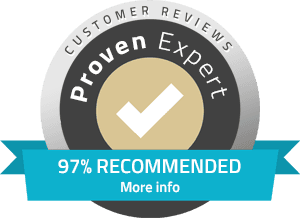Creating an effective B2B digital marketing strategy involves several key components that need to be carefully planned and executed. Here’s a step-by-step guide to help you develop a comprehensive and effective B2B digital marketing strategy:
1. Understand Your Target Audience:
- Develop Buyer Personas: Create detailed profiles of your ideal customers, including demographics, job roles, challenges, and purchasing behaviors.
- Market Research: Conduct surveys, interviews, and focus groups to gain insights into your target audience’s needs and preferences.
2. Set Clear Objectives and Goals:
- SMART Goals: Make sure your goals are Time-bound, Relevant, Specific, Measurable, and Achievable (SMART).
- Align with Business Goals: Your marketing goals should support your overall business objectives, such as lead generation, brand awareness, or sales growth.
3. Create a Strong Value Proposition:
- Unique Selling Points (USPs): Clearly articulate what makes your product or service unique and how it addresses the pain points of your target audience.
- Messaging: Develop consistent and compelling messaging that resonates with your audience across all channels.
4. Optimize Your Website:
- User Experience (UX): Ensure your website is user-friendly, mobile-optimized, and easy to navigate.
- SEO: Optimize your site for search engines to improve visibility and organic traffic. Focus on relevant keywords, meta tags, and quality content.
- Landing Pages: Create dedicated landing pages for specific campaigns to capture leads effectively.
5. Content Marketing:
- Content Strategy: Develop a content strategy that includes blog posts, whitepapers, case studies, eBooks, webinars, and videos.
- Educational Content: Focus on creating content that educates and informs your audience, addressing their pain points and positioning your company as a thought leader.
- Content Calendar: Plan and schedule your content to ensure consistency and regularity.
6. E-mail Marketing:
- Segmentation: Segment your email lists based on criteria such as industry, job role, and behavior to deliver personalized content.
- Automation: Use email marketing automation to nurture leads with targeted content and follow-up sequences.
- Value-Driven Content: Provide valuable insights, industry news, and educational content in your emails to keep your audience engaged.
7. Social Media Marketing:
- Platform Selection: Focus on the social media platforms where your target audience is most active, such as LinkedIn, Twitter, and Facebook.
- Engagement: Share industry news, company updates, and thought leadership content. Engage with your audience through comments, discussions, and direct messages.
- Advertising: Use paid social media campaigns to reach a broader audience and generate leads.
8. Paid Advertising;
- PPC Campaigns: Run pay-per-click campaigns on Google Ads and Bing Ads targeting relevant keywords.
- Remarketing: Use remarketing campaigns to re-engage visitors who have interacted with your site but haven’t converted.
- LinkedIn Ads: Utilize LinkedIn’s targeting options to reach decision-makers and professionals in specific industries.
9. Analytics and Reporting:
- KPIs: Define key performance indicators (KPIs) such as lead generation, conversion rates, website traffic, and ROI.
- Tools: Use tools like Google Analytics, HubSpot, and SEMrush to track and analyze your marketing performance.
- Regular Reporting: Generate regular reports to evaluate the effectiveness of your strategy and make data-driven decisions.
10. Continuous Improvement:
- A/B Testing: Experiment with different versions of emails, landing pages, and ads to determine what works best.
- Feedback: Gather feedback from your sales team and customers to refine your strategies.
- Stay Updated: Keep up with industry trends, new tools, and best practices to continuously improve your strategy.
Example of a B2B Digital Marketing Strategy:
Objective: Generate 200 qualified leads per month and increase brand awareness.
Target Audience: IT managers and CTOs in mid-sized technology companies.
Tactics:
- Content Marketing:
- Publish 4 blog posts per month focused on industry challenges and solutions.
- Create a monthly webinar series on emerging technology trends.
- Content Marketing:
SEO:
- Optimize the website for keywords related to IT solutions and services.
- Publish case studies with relevant keywords.
- Email Marketing:
- Develop a 6-email nurture sequence for new leads.
- Send a bi-weekly newsletter with industry insights and company updates.
- Social Media:
- Share blog posts and case studies on LinkedIn and Twitter.
- Run LinkedIn ads targeting IT managers and CTOs.
Paid Advertising:
- Launch a Google Ads campaign targeting keywords like “IT solutions for mid-sized companies.”
- Use remarketing ads to target website visitors who downloaded a whitepaper.



